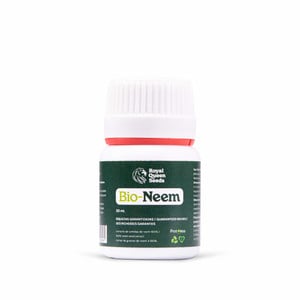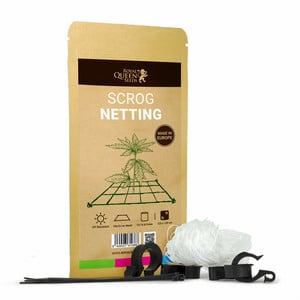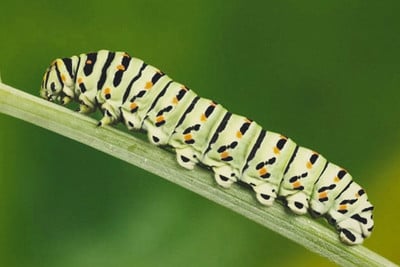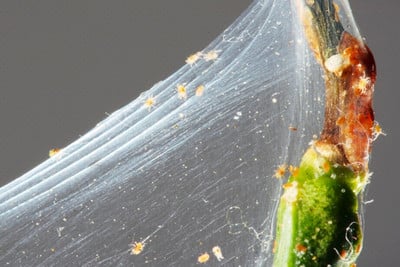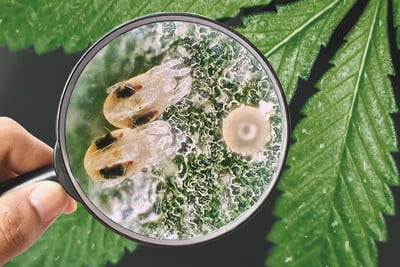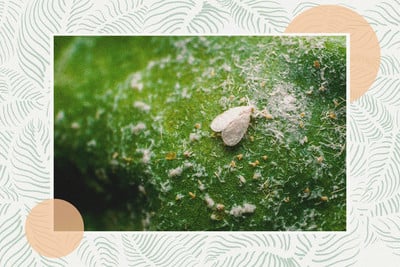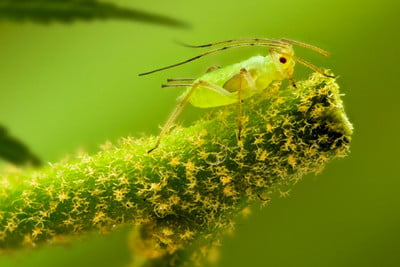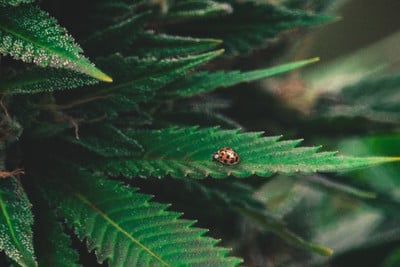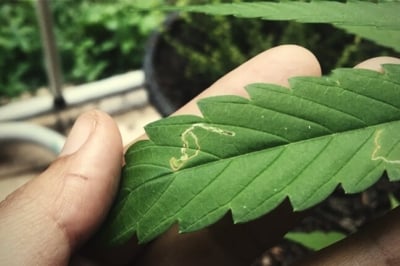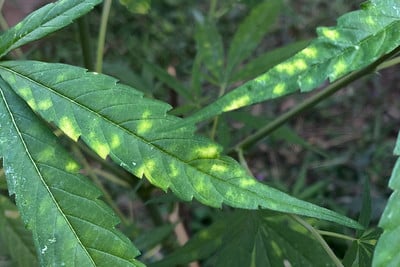.

How to Treat and Prevent Thrips on Cannabis Plants
Whether you grow indoors within four walls or outdoors in the elements, know that your plants are always at risk of a thrip infestation. While not the most devastating of cannabis pests, these small creatures can still cause stunted growth and poor yields. Below, find out how to treat thrips and prevent them from showing up altogether.
You’ve got a plan in place to deal with aphids and slugs. Heck, you even actively shield your plants against the bad kinds of nematodes. But what’s your thrip strategy? Don’t leave your plants defenceless against these tissue-piercing critters. Once you get to the end of this article, you’ll have another notch on your pest management belt.
Contents:
What Are Thrips?
Thrips are small flying insects that belong to the order Thysanoptera. Adult thrips are typically around 1.25mm in length, feature two pairs of narrow wings, and range from white and yellow to brown and black in appearance. The life cycle of a thrip starts when a female adult lays eggs on leaves or bud tissue. Over the next two weeks, the hatched larva will transform into a pre-pupa, pupa, and finally an adult thrip. Because they multiply so quickly, thrip infestations can quickly get out of hand.
Much like aphids, another rampant cannabis pest, thrips also possess sharp mouthparts that allow them to puncture the leaves and stems of plants. Although they can’t pierce deep into plants, they still manage to penetrate surface-level cells and suck out all of the goodness within, including minerals and sugars. One or two thrips damaging a handful of cells pose little risk to healthy cannabis plants. However, large numbers of these pests can suck dry enough cells to stunt growth and reduce yields.
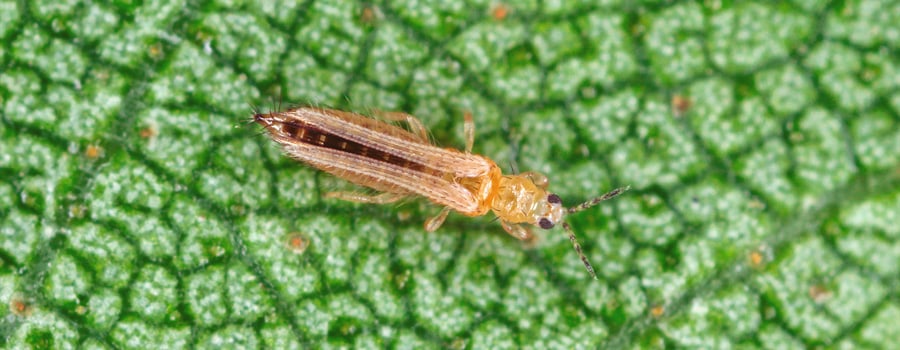
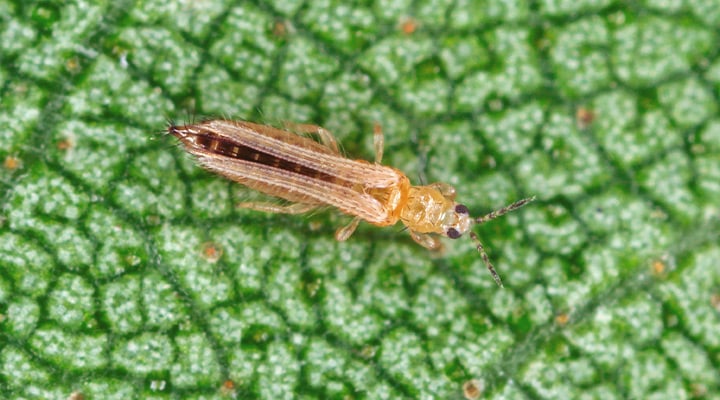
Can Thrips Fly?
Thrips can absolutely fly. And don’t underestimate their aerial prowess based on their small size. These small critters can move over long distances by riding the wind. Even if thrips are present in a garden not directly adjacent to your own, they have the potential to access your weed plants regardless. Their ability to go airborne means growers need to consider how to protect their plants against their non-terrestrial movements. But worry not, you’ll discover some effective defence strategies below!
What Does Thrip Damage on Cannabis Leaves Look Like?
You’re now more clued up about these pesky critters, but how do you know when you have an infestation, and what does thrip damage look like? Of course, directly laying eyes on a thrip will confirm their presence. However, the key symptoms below will help you to detect them, even without seeing them yourself:
- Stunted growth: A large thrip infestation will quickly sap plants of the resources they need to survive. A loss of key minerals and compounds, alongside a generalised stress response, will cause plants to lose their vigour and stop growing optimally.
- Papery and distorted leaves: Thrip attacks also make once-luscious fan leaves appear rather weak and pitiful. They lose their turgidity and shape and become papery and unimpressive to the eye.
- Black dots: Thrips won’t just gut the cells of your cannabis plant. No; they also have the audacity to leave faecal deposits behind after feasting. These black dots look unsightly and also contaminate cannabis buds.
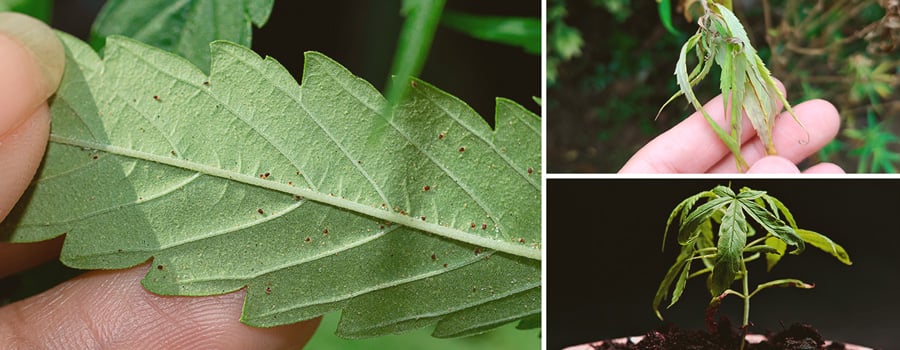
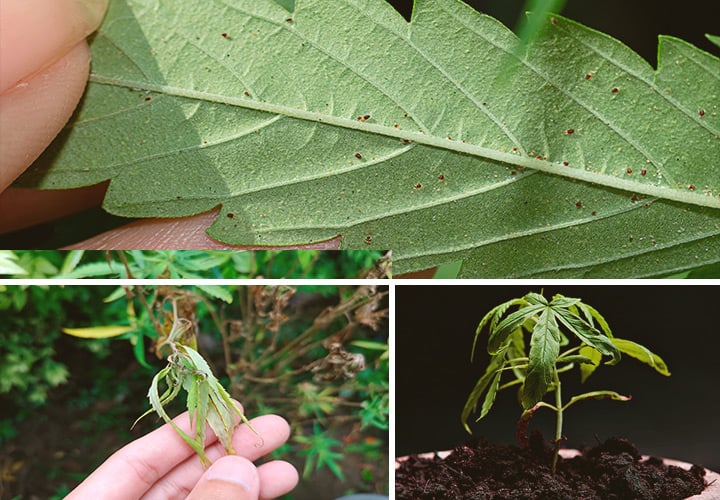
How to Get Rid of Thrips on Cannabis Plants
A small number of thrips is not a cause for concern. Although some growers might be tempted to reach for their pesticide of choice upon seeing a single specimen, you should only take such drastic action during a serious invasion.
Below, we’ll walk you through some of the best ways to eradicate thrips from your cannabis garden or growing room. After that, we'll dispense advice on preventing them from gaining a foothold to begin with.
Insecticides
We’ll mention chemical insecticides, but we don’t particularly endorse their use. These harsh and environmentally damaging compounds work to get large commercial operations out of sticky situations, but they have serious long-term consequences if relied upon. These chemicals temporarily paralyse insects and are often combined with piperonyl butoxide to ensure the eradication of the species in question. Because they break down rapidly, growers need to make sure they make immediate, direct contact with pests. Though effective, pyrethrins (pest-toxic chemicals found in chrysanthemum flowers) are known to cause harm[1] to aquatic life, beneficial insects, and honey bees.
Neem Oil
This natural insecticide contains several active components that can stop thrips in their tracks, including azadirachtin[2]. As well as repelling insects, the compound prevents an array of insects from feeding, and disrupts their reproductive cycle. It puts an end to immediate damage caused by thrips and lowers their populations over time. To use it, simply add 1 tablespoon to 4l of water and add a few drops of dish soap to the mix. Stir thoroughly and pour into a spray bottle. Put on some gloves and eye protection, and get to work!
Predatory Insects
Thrips play an important role in several ecosystems and therefore have multiple natural predators. Cannabis growers can artificially introduce these beneficial species into their cultivation space to help bring down thrip numbers and control populations going forward. Some of the most effective predator insects for controlling thrips include:
- Ladybugs: This iconic predatory insect usually shows up all on its own. However, if your garden is lacking in ladybugs, you can introduce them either as larvae or adult insects. Both of these stages of growth are ravenous thrip eaters!
- Lacewings: Lacewings and thrips have several traits in common. They’re both small, have wings, and possess piercing mouthparts. However, they use their sharp appendages in very different ways. Whereas thrips use them to pierce plant flesh, lacewings use them to pierce and devour thrips themselves. You’ll find both lacewing eggs and larvae in some garden centres and grow shops.
- Predatory mites: Several species of predatory mites also roam around cannabis plants in search of thrips. They may seem small and harmless to the naked eye, but they’re tough and hard-working predators with a particular appetite for thrip flesh! Amblyseius cucumeris is one of the best species to use to defend your plants from this pest. You can purchase them in sachets and release them according to product instructions.
- Rove beetles: Before reaching the larval stage, thrip pupae drop down to the soil to develop. Here, rove beetles will happily feast on them—but not if you don’t provide the correct habitat! To get plenty of these beneficial nutrient cyclers roaming around your soil, you need to provide a good amount of mulch that they can call home. Lay down a couple of centimetres of grass clippings or dead leaves around your plants.
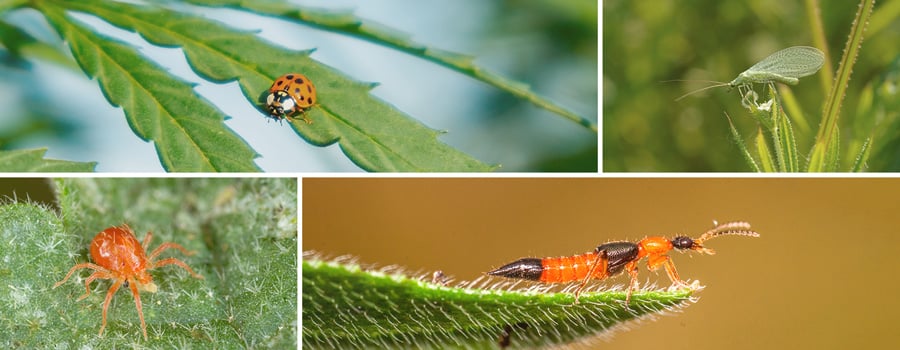
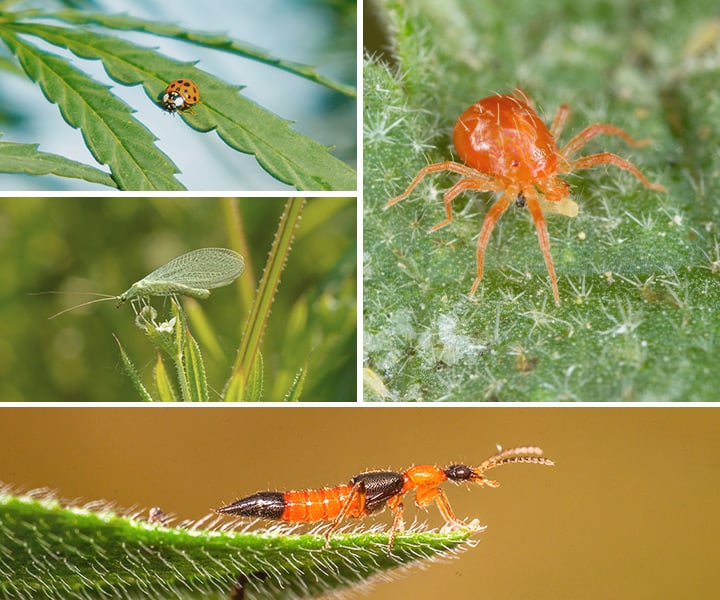
Bacillus Thuringiensis
Bacillus thuringiensis, more simply known as BT, is a species of bacteria that can help growers deal with a thrip infestation organically. After spraying BT on plants, thrips and other pest insects see them as a food source and quickly devour them. However, once consumed, they start to release insecticidal compounds. These toxins wreak havoc on the digestive system of thrips and swiftly kill them.
What Is the Best Way to Prevent Thrips on Plants?
The options above are effective ways to deal with thrip infestations. However, you’ll save yourself time and effort, and protect your plants against stress and damage, by preventing thrips from becoming a problem in the first place. Now that you know the best thrip treatments, learn the most effective preventative measures.
Sticky Fly Traps
Sticky traps are extremely simple but highly effective. Their bright yellow colour naturally attracts thrips. Once they make physical contact with these sticky sheets, they become bound up and are no longer a threat to your plants. Simply hang several sticky traps around your plant canopies, and lay a couple on the surface of the soil to deal with pupae. While effective, sticky traps work in a scattershot fashion. They’ll also trap and kill other insect species, including beneficial ones. Keep this in mind when deploying this pest control method.
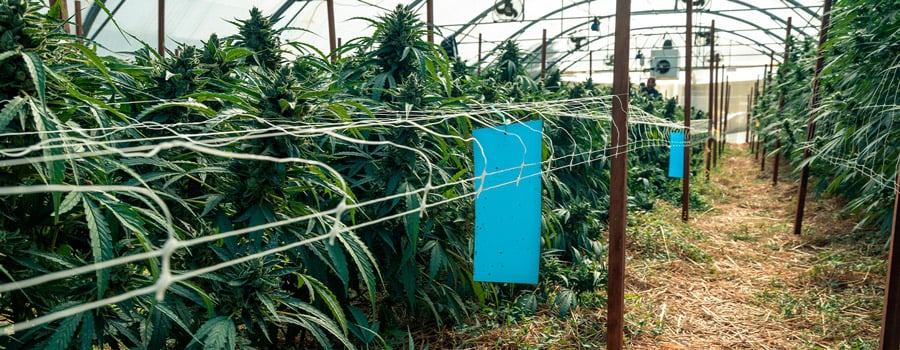
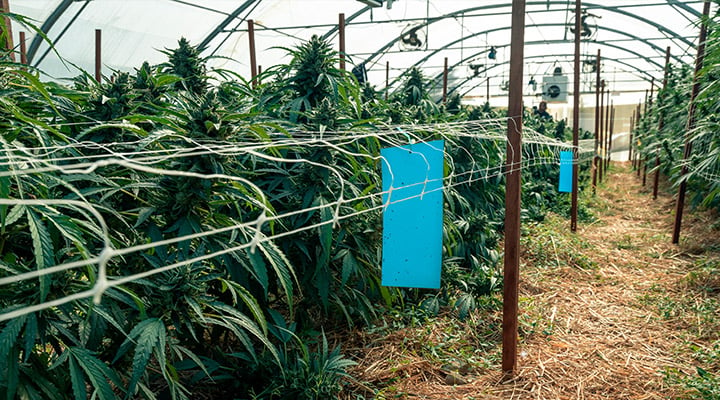
Netting
Netting also provides an extremely simple solution to thrip infestations. Netting with a narrow meshwork will help to keep an array of unwanted critters off your cannabis plants. Plus, if you enjoy growing food alongside your weed, this piece of kit will also help to protect Brassica plants against the dreaded cabbage white butterfly. Adding to this, you’ll also keep your plants safe from hungry birds and curious household pets.
Cultivate Biodiversity
Remember when we said a small amount of thrips isn’t anything to fret about? That’s because they naturally show up as members of several ecosystems. If you’re growing weed in a biodiverse garden, the predator-prey balance will equalise things and keep thrip populations at a natural level. However, many growers opt for monocrops over polycultures. While it seems like a more efficient way of growing at first, it often backfires and promotes the spread of pests and disease. Surround your weed plants with a rich diversity of herbs and flowers to attract beneficial insects and save yourself a lot of work when it comes to pest management.
Practise Good Housekeeping
Consider what could act as a vector for thrips to enter your garden or growing room. Your clothes, the bottom of your shoes, cuttings, and other forms of plant material can all introduce this pest to your cultivation space. Make sure to clean your boots and even change clothes after arriving home from your friend's garden. Maintain a zero-clone policy and produce your own cuttings to drastically slash the odds of pests and diseases working their way into your growing operation.
Refresh Growing Medium
If you’re cultivating indoors, it’s a good idea to swap out your growing medium after each cycle. While more expensive than amending, it’ll help to keep pest problems down by removing eggs from the growing space between each run.
Will Thrips Ruin Your Cannabis Harvest?
Thrips can cause real issues when growing cannabis. They pale in comparison to other pests and diseases in terms of severity, but they can still stunt growth and lessen yields. However, these critters are easy to detect and simple to deal with once discovered. Plus, you’re now equipped with the knowledge to prevent them from causing trouble in the first place. Go on and grow with confidence!


























